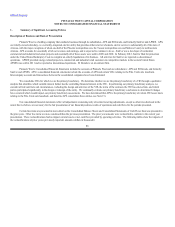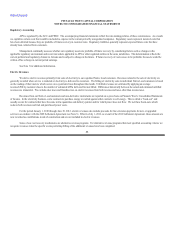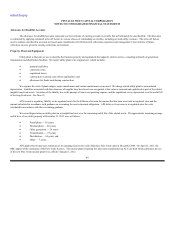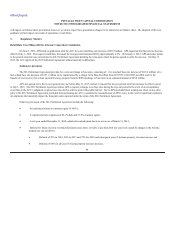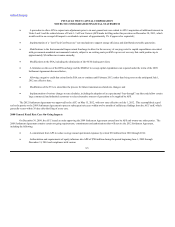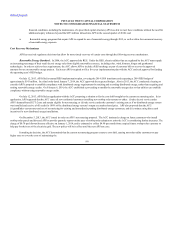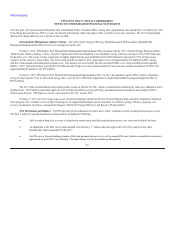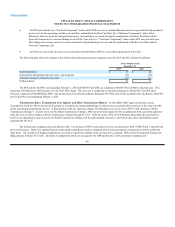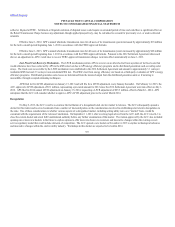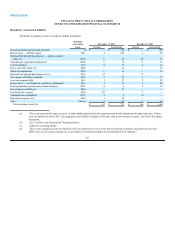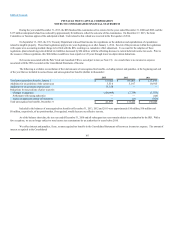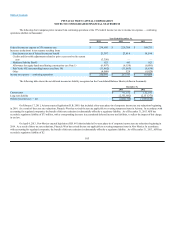APS 2013 Annual Report Download - page 100
Download and view the complete annual report
Please find page 100 of the 2013 APS annual report below. You can navigate through the pages in the report by either clicking on the pages listed below, or by using the keyword search tool below to find specific information within the annual report.
Table of Contents
PINNACLE WEST CAPITAL CORPORATION
NOTES TO CONSOLIDATED FINANCIAL STATEMENTS
financial conditions, including the maintenance of a prescribed capital structure (APS was able to meet these conditions without the need for
additional equity infusions beyond the $253 million infused into APS in the second quarter of 2010); and
· Renewable energy programs that require APS to expand its use of renewable energy through 2015, as well as allow for concurrent recovery
of renewable energy expenses.
Cost Recovery Mechanisms
APS has received regulatory decisions that allow for more timely recovery of certain costs through the following recovery mechanisms.
Renewable Energy Standard. In 2006, the ACC approved the RES. Under the RES, electric utilities that are regulated by the ACC must supply
an increasing percentage of their retail electric energy sales from eligible renewable resources, including solar, wind, biomass, biogas and geothermal
technologies. In order to achieve these requirements, the ACC allows APS to include a RES surcharge as part of customer bills to recover the approved
amounts for use on renewable energy projects. Each year APS is required to file a five-year implementation plan with the ACC and seek approval for funding
the upcoming year’s RES budget.
On July 12, 2013, APS filed its annual RES implementation plan, covering the 2014-2018 timeframe and requesting a 2014 RES budget of
approximately $143 million. In a final order dated January 7, 2014, the ACC approved the requested budget. Also in 2013, the ACC conducted a hearing to
consider APS’s proposal to establish compliance with distributed energy requirements by tracking and recording distributed energy, rather than acquiring and
retiring renewable energy credits. On February 6, 2014, the ACC established a proceeding to modify the renewable energy rules so that utilities can establish
compliance without using renewable energy credits.
On July 12, 2013, APS filed an application with the ACC proposing a solution to fix the cost shift brought by the current net metering rules. In its
application, APS requested that the ACC cause all new residential customers installing new rooftop solar systems to either: (i) take electric service under
APS’s demand-based ECT-2 rate and remain eligible for net metering; or (ii) take service under the customer’s existing rate as if no distributed energy system
was installed and receive a bill credit for 100% of the distributed energy system’s output at a market-based price. APS also proposed that the ACC:
(i) grandfather current rates and use of net metering for existing and immediately pending distributed energy customers; and (ii) continue using direct cash
incentives for new distributed energy installations.
On December 3, 2013, the ACC issued its order on APS’s net metering proposal. The ACC instituted a charge on future customers who install
rooftop solar panels and directed APS to provide quarterly reports on the pace of rooftop solar adoption to assist the ACC in considering further increases. The
charge of $0.70 per kilowatt became effective on January 1, 2014, and is estimated to collect $4.90 per month from a typical future rooftop solar customer to
help pay for their use of the electricity grid. The new policy will be in effect until the next APS rate case.
In making its decision, the ACC determined that the current net metering program creates a cost shift, causing non-solar utility customers to pay
higher rates to cover the costs of maintaining the
96


